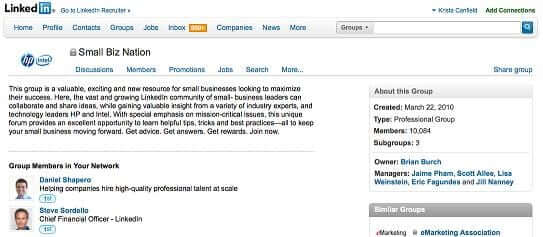Your customers know a lot more about you than they used to. But you can learn about them, too, making that first contact potentially more productive. Here’s how.

Cold calling. Nothing strikes more apprehension in the heart of a sales professional than that uncomfortable phrase. But when you run out of leads, what else can you do?
You can improve your chances of closing sales with those unknown prospects by finding them on Facebook. Tracking them on Twitter. Looking them up on LinkedIn. Getting acquainted on Google+.
Courting The Savvy Customer
Before you tap out that first email or pick up the phone, find out who these potential customers are. People post publicly on social media because they want to be noticed. You’re not exactly eavesdropping.
And if they didn’t know anything about you before you contacted them, you can be sure that they’ll know a lot before they respond to your message. Where consumers and businesses used to rely on you for the skinny on your company and products, they’re now listening to peers in their social networks before they even exchange Hello’s with you.
So return the favor. You shouldn’t feel creepy checking out prospects. You may find that at least some individuals and businesses like the fact that you made the effort to see if their needs and your products and services are a good match.
Searching the Database
It’s been said that the internet is a giant sales database. You can think about it like that, but don’t act like it is.
It’s not rocket science. There’s a social aspect to every sale, in person or online. Use your personal skills in new ways, especially in dealing with cold calls. Here are some ways to get started:
- Look for clues. Find out where your prospects “live” on the internet. Then listen. What are they talking about, complaining about, praising? Using Nimble to keep track of the myriad details you’ll be collecting helps you create thorough profiles through its unified social streams.
- Put the “R” back into your CRM. Target your early efforts toward building a relationship with potential customers and hold off on anything that smacks of a sales pitch. Social media has killed the hard sell.
- Don’t use a script. Social media is casual, so you should match this tone.
- Become a power LinkedIn user. Get involved with LinkedIn Groups. This is a great way to display your expertise – and to look for approachable prospects. While you’re there, don’t just communicate with your top-level contacts. Look at those who are seconds and thirds, and ask for referrals from your first-tier friends. Look at secondary interests people have. Ask for recommendations and reciprocate. Above all else, make sure your profile is honest, thorough and inviting.
- Let Twitter and Facebook help you find people and companies to follow and Friend. The tools are all there for you. Twitter just revamped its Discover tool, for example. When you click on Who to Follow, Twitter now displays a list of suggestions based not only on your own activity, but also that of the individuals that those people follow. Click on the new View Tweet link in Stories, and you’ll see tweets from people in your network (and others). Facebook seems to add features almost daily; you can always see what’s new here.
- Use Circles on Google+ to learn about and share with targeted groups. No more one-size-fits-all messages.
- If you have a blog – and you should – engage and educate. Use it to learn about and help deal with your visitors’ pain points. Pay close attention to comments and respond to them rapidly. Visit blogs hosted by competitors and listen to the conversations there. Ask. Start a poll or a contest. Initiate threads that encourage your audience to vent. Think like your potential customers. If you wanted to solve a problem or find a product or service provider in a specific area, what words would you use in a search? Populate your posts with those keywords.
- Give people a reason to like you, or at least know you. Don’t be all business. Customers like to buy from people they like. How can they like you if they don’t know you? Start some off-topic threads and contribute to some.
- Offer something of value – free – to your prospects. Product samples, a webinar invitation or educational white paper – even a promotional tchotchke with your company’s name on it. Once you know something about them, you should be able to come up with an appropriate freebie.
- Don’t expect miracles.This approach doesn’t promise instant success. Blogs can take many months to really build up an interested audience and quality, focused conversations. The same goes for all of your other online interaction.


Tailor Your Approach
When you find the best venues to establish yourself as an expert in your field, you may find that some prospects will come to you. But don’t bank on this.
After you’ve developed a relationship – or a few – the time will come when you will finally want to start steering the conversation toward the possibility of a sale. You’ve done this before, but perhaps not with as much knowledge of your potential client. Your approach will likely be different with each individual or company because you have a feel for who they are.
And while you’re still doing what’s technically a cold call – introducing the idea of a sale to someone who hasn’t initiated the contact – it shouldn’t feel so frigid. Your cumulative knowledge of each other makes it much easier for you to know who may be receptive, and for those people to decide whether to take the next step.

